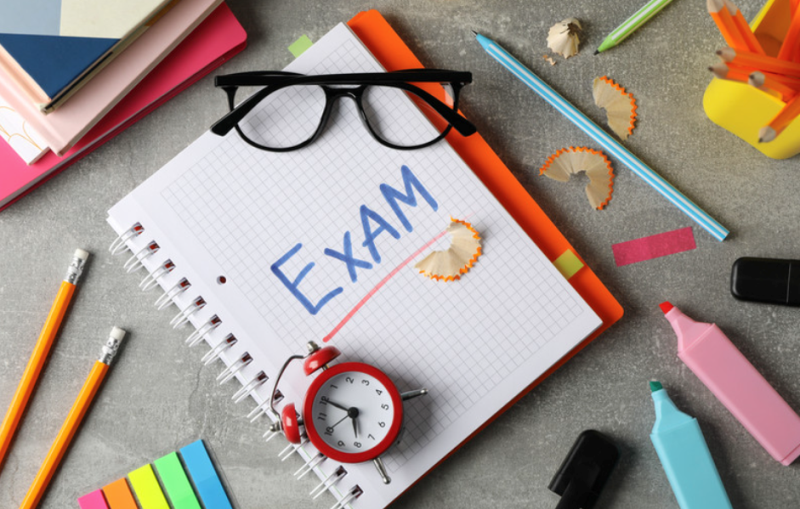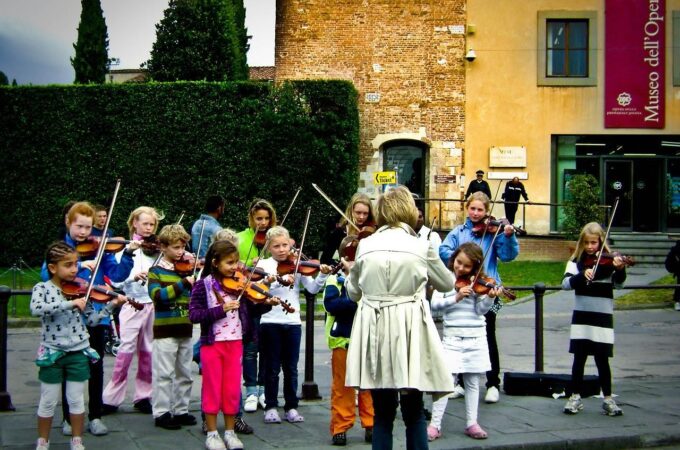
Class 8 Science Exam: Make Learning Fun With These Tips and Tricks
Science explains all the intricate phenomena in the world around us by using the art of observation and experimentation. Each law and statement is rooted in logical proof. Contributions of eminent scientists like Albert Einstein, Marie Curie, Isaac Newton, and Galileo Galilei have revolutionized our knowledge of the universe. The microscope helps us observe minuscule atoms while the telescope helps us observe planets several light-years away. Each day, remarkable discoveries and inventions are made in the field of science.
There is no other subject more interesting than this if one knows the right way to study it. Students tend to label science subjects as difficult because there is so much information to process and remember. However, with the help of the right teachers and a systematic approach to studying, you can score very good marks in science, all while enjoying the subject. This will also help you later in life if you choose to pursue science as a career option in higher classes and build your base for future competitive exams simultaneously.
CBSE Class 8 Science Syllabus

In class 8, Science is not divided into Physics, Chemistry, and Biology. The division of subjects is done in class 11 Science. Thus, the class 8 NCERT book contains chapters from all the different branches of science compiled together. You can download the NCERT Science Class 8 pdf of the textbook online and go through the syllabus given below:
-
- Chapter 1: Crop Production and Management – This chapter deals with the process of cultivating crops. It also talks about the soil and weather conditions required for a bounty harvest.
- Chapter 2: Microorganisms: Friend and Foe – The kingdom classification is done based on eukaryotic and prokaryotic organisms. Bacteria and protists are dealt with in detail.
- Chapter 3: Synthetic Fibres and Plastics – An introduction to modern man-made fibres and plastics is provided without going into too much detail.
- Chapter 4: Materials: Metals and Non-Metals – Elements are classified based on the variation of their properties. They are generally divided into metals and non-metals. An elementary description of the most common metals and non-metals is also taught.
- Chapter 5: Coal and Petroleum – Energy sources are talked about and differentiated into renewable and non-renewable sources. The rising need to develop more sustainable and eco-friendly sources of fuel is also highlighted and discussed.
- Chapter 6: Combustion and Flame – As an extension of the 5th chapter, this chapter deals with the process of combustion and how fuel resources are transferred into usable forms of energy. The calorific value of fuel is also explained properly.
- Chapter 7: Conservation of Plants and Animals – Students are taught about the importance of conserving flora and fauna. Wildlife sanctuaries and national parks are also mentioned in brief. Questions are set on the locations of some popular national parks and wildlife sanctuaries.
- Chapter 8: Cell – Structure and Functions – This is the most important chapter in biology. It talks about the cell as the structural and functional unit of life.
- Chapter 9: Reproduction in Animals – The biological process of reproduction is explained to maintain the continuity of species.
- Chapter 10: Reaching the Age of Adolescence – This is a very important chapter for students in class 8. It helps them identify the signs of puberty and the hormonal, physical, and emotional changes that accompany it.
- Chapter 11: Force and Pressure – Mechanical concepts of force and pressure are taught here. Students are made to distinguish between contact and non-contact forces and learn their significance.
- Chapter 12: Friction – The terms sliding friction and static friction are introduced to students for the first time. The chapter has several examples of frictional forces in daily life. Very simple questions are asked from this chapter as this topic is properly taught in higher classes.
- Chapter 13: Sound – Longitudinal and transverse waves of sound need a medium to travel. Details are given in easy language.
- Chapter 14: Chemical Effects of Electric Current – This chapter marks the beginning of Electrochemistry. Processes like electroplating are discussed.
- Chapter 15: Some Natural Phenomena – The scientific reasoning behind some naturally occurring phenomena is explained. Questions are frequently asked on earthquakes and lightning strikes.
- Chapter 16: Light – The chapter provides a comprehensive study on light. The laws of reflection form the backbone of the chapter. Ray diagrams also have to be drawn.
- Chapter 17: Stars and The Solar System – Very interesting facts are taught in this chapter. The difference between asteroids, satellites, and planets is made apparent. Stars are also discussed in great detail.
- Chapter 18: Pollution of Air and Water – Topics like global warming, acid rain, greenhouse effect, and eutrophication are dealt with. Emphasis is given to the importance of conserving water as it is a limited resource.
Tips To Make Learning Class 8 Science Fun

- Subscribe to a monthly science magazine: Many student-oriented magazines are circulated in schools that contain interesting facts about the scientific world. Indulge yourself in these in your free time and watch yourself grow enthralled with science.
- Use audio-visual aids while studying: Watching YouTube videos on the same topic you are studying from your NCERT textbook can prove to be particularly useful. This helps you retain more information while having fun studying science.
- Co-relate the material taught: For example, the chapters Microorganisms: Friend and Foe and Cell – Structure and Functions, are directly interlinked. Microorganisms are generally single-celled creatures. If you understand the chapter Cell properly, you will have no difficulty studying the chapter on Microorganisms.
- Take part in science exhibitions and quizzes: The more you put your knowledge to the test, the more you will learn. The days of rote learning are long gone. Make exciting science models and take part in exhibitions with your peers.
- Conduct experiments in the laboratories: Students are generally allowed to perform selected experiments in the lab under the supervision of teachers. These experiments help you see a physical demonstration of all that you have learnt on paper. Use this time to your advantage and make the most out of it.




